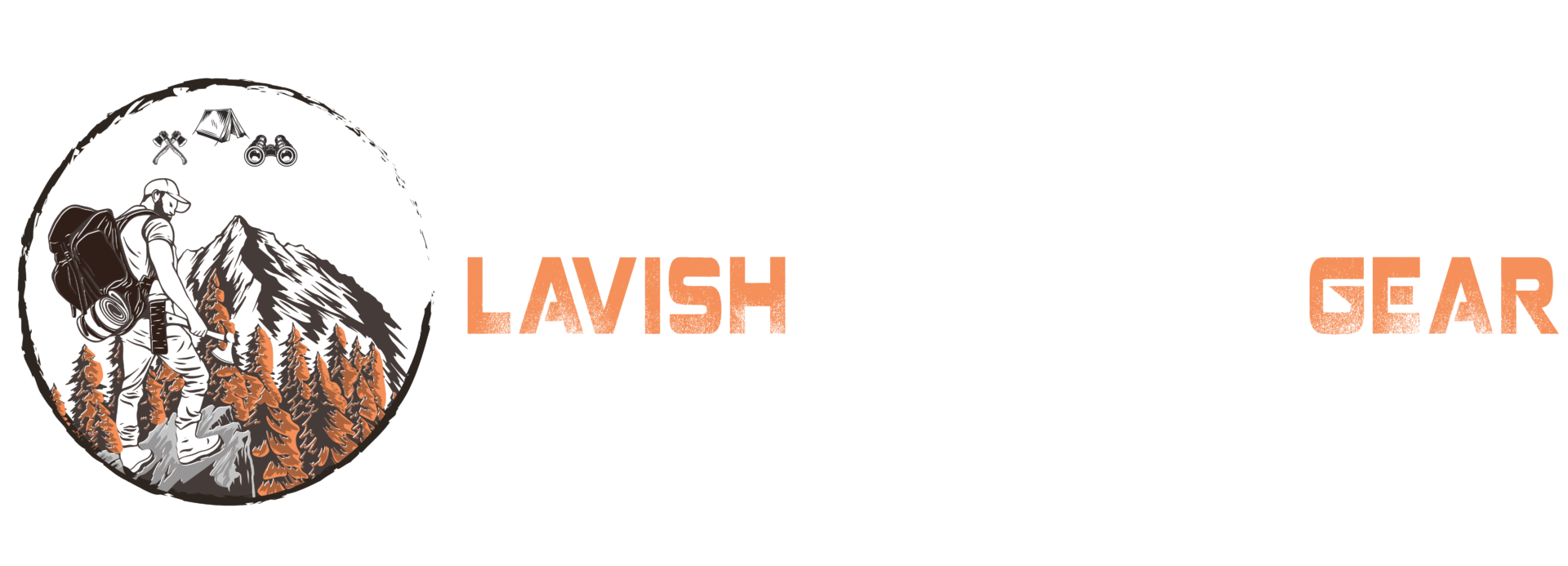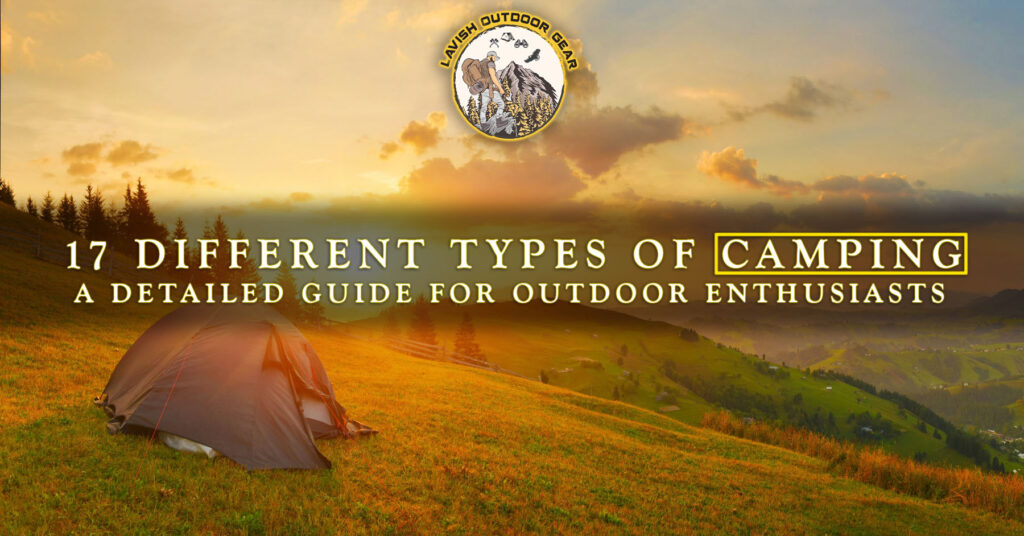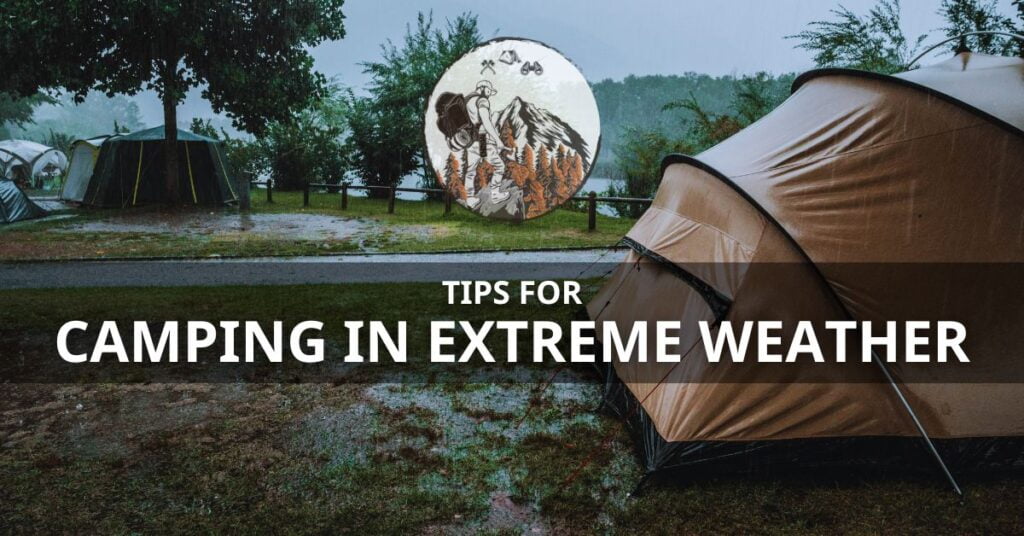Camping enthusiasts know that camping is incomplete without a starry night sky, marshmallow roasts, and the crackle of a campfire. However, one important element of a successful outdoor adventure is often ignored: the sleep system. Knowing how to choose a sleeping bag for camping is crucial for ensuring that your camping trip is both comfortable and safe.
In this detailed guide, we will assist you in choosing the most appropriate sleeping bag for your camping style, comfort needs, budget, and the season you’ll be camping in. Whether you need to know about temperature ratings or sustainability, this guide has got you covered like the perfect sleeping bag on a cold night.
Table of Contents
Introduction to Camping Sleeping Bags
A high-quality sleeping bag is your cocoon against the elements when camping. This mobile sleep shelter not only keeps you comfortable but can also be a life-saving component of your outdoor gear.
However, with an abundance of options on the market, picking the right one can be daunting. Here’s where to start.
Importance of a Good Sleeping Bag
Your sleeping bag is your primary source of insulation when out in the elements. It retains and circulates body heat, keeping you warm and enabling a restful night’s sleep.
Overview of Factors to Consider
A range of factors come into play when selecting a sleeping bag. From the type of insulation to size, weight, and special features, each decision impacts your overall camping experience.
Understanding Temperature Ratings
Temperature ratings are like secret codes – decipher them correctly, and you’ll unlock the perfect sleeping bag for your needs.
What Are Temperature Ratings?
Temperature ratings indicate the lowest temperature at which a sleeping bag can keep the average user warm. Understanding these numbers is crucial to prevent overpacking (or underpacking) for the conditions you will face.
Importance of Matching Ratings to Your Needs
Don’t take these ratings lightly. Undertake an honest self-assessment of how warm or cold you typically feel at night. Consider factors like metabolism, the humidity of the camping area, and whether you usually sleep hot or cold.
Types of Camping Sleeping Bags
Camping sleeping bags come in various shapes and sizes, each designed for different uses and body types.

Mummy Bags
Tight in the foot box and wider in the shoulders, mummy bags are known for their ability to retain heat. Ideal for cold-weather camping, they’re not favored by those who prefer to move around at night.
Mummy sleeping bags are designed to provide maximum thermal efficiency. They feature a tapered shape that wraps around the body to minimize air pockets and retain heat. The streamlined design reduces bulk and enhances portability, making them ideal for backpackers.
Although they provide warmth, their constricted shape may limit movement for some sleepers. Additional features like draft collars and insulated zippers are added to reinforce warmth retention, ensuring comfort in colder climates.

Rectangular Bags
More spacious than mummy bags, rectangular bags offer less insulation but provide more room to sleep in different positions, akin to a traditional bed.
Rectangular bags are ideal for those valuing comfort with ample room to move, often doubling as blankets when unzipped. While bulkier and heavier than mummy bags, making them less suited for backpacking, they excel in casual, family-oriented camping where weight is not a concern.
Couples appreciate the ability to zip bags together for a shared sleeping space, although the roominess does compromise heat retention in cold weather.

Semi-Rectangular Bags
Combining the best of both worlds, semi-rectangular bags offer a balance between warmth and space. They are a popular choice for backpackers and versatile enough to use in various climates.
Semi-rectangular bags, often called “barrel” or “modified mummy” bags, taper gently and provide a middle ground in both warmth and spaciousness. This makes them a strategic pick for adventurers seeking comfort without greatly sacrificing thermal efficiency.

Quilts
Quilts are a minimalist’s dream. They’re essentially blankets with straps that wrap around you and can be more ventilated than traditional bags.
Quilts offer an ultra-lightweight and compactable alternative, providing appreciated versatility and freedom of movement for the sleeper. Perfect for warmer weather or for those who find traditional sleeping bags too claustrophobic, quilts adapt easily to a camper’s shape and sleeping habits, allowing for a customizable sleep experience under the stars.
Double Sleeping Bags
Designed to accommodate two people, double sleeping bags are great for couples or those who want to share body warmth.
Double sleeping bags are particularly suited for car camping and situations where space and weight are not primary concerns. They provide a sense of closeness that can enhance the camping experience for partners.
However, it’s important to note that while these bags offer more warmth due to shared body heat, they can sometimes compromise individual comfort if there’s a significant difference in sleep temperature preferences between campers.
Insulation Materials
The type of insulation in your sleeping bag will greatly affect its performance and durability.
Down Insulation
Known for its high warmth-to-weight ratio, down is the gold standard. It compresses well for packing but can lose its insulating properties when wet.
Synthetic Insulation
Synthetic materials have made leaps in mimicking down’s insulating power while remaining effective in damp conditions. They also tend to be more affordable.
Hybrid Insulation Options
New on the scene, hybrid insulations combine the best of both worlds—down’s loft with synthetic moisture resistance.

Weight and Packability Considerations
When backpacking, every ounce counts. Consider the trade-off between weight, comfort, and warmth.
Importance of Weight for Backpacking
Ultralight backpackers will want the lightest bag that still meets their insulation needs. The efficiency of your pack hinges on weight; excess heft from a sleeping bag can quickly sap energy and reduce miles traveled. An optimal balance is crucial for endurance and agility on the trail.
Balancing Weight with Comfort and Warmth
For car campers, the comfort of a larger, heavier bag might be worth the trade-off. Nevertheless, while prioritizing warmth and comfort, consider the implications of weight and bulk if the situation calls for any degree of portability or if campsite access involves a considerable walk.
Packability and Compression
A bag’s compressibility can be just as important as a weight for saving space in your pack. Compression sacks can dramatically reduce your bag’s volume, making more room for other essentials. A sleeping bag’s ability to compress without damaging its structure impacts overall packability.
Size and Fit Guide
A sleeping bag shouldn’t be too constrictive or too roomy—finding the right fit is crucial for optimum warmth.
Length and Width Considerations
Most bags come in a standard size range, but some manufacturers offer variations for taller or broader individuals. Ensure appropriate sizing by considering the sleeper’s height and shoulder width; a snug but comfortable fit is key to maintaining thermal efficiency without feeling restricted.
Roominess vs. Snugness
Think about how much you like to move around in your sleep. A snug fit might retain more heat, but too tight can be uncomfortable. Roominess allows for turning and finding the perfect sleeping position, while snugness is critical for maximum heat retention on chilly nights. Choose based on your personal comfort preference and the temperatures you expect to encounter.
Fabric Durability and Water Resistance
Your bag’s outer fabric safeguards its insulating material and ensures it lasts for many camping seasons.
Durable vs. Lightweight Fabrics
Heavy-duty fabrics will last longer but add weight. Lightweight fabrics are appropriate for summer bags where durability is less of a concern.
Waterproof vs. Water-Resistant Options
Consider the climate of your typical camping environment. A waterproof bag can be a lifesaver in rainy areas.
Special Features and Accessories
Modern sleeping bags offer an array of features designed to enhance comfort and performance.
Hood Design and Functionality
A well-designed hood can prevent heat loss from your head, an area of the body especially prone to losing warmth.
Draft Tubes and Collars
Keeping zippers and hoods draft-free is critical for retaining warmth. Look for bags with draft tubes and insulated collars.
Pockets and Storage Options
Some bags come with internal pockets for keeping small, important items like electronics or a midnight snack.
Compatibility with Sleeping Pads
Many bags feature pads or straps that keep you in place on the pad, preventing you from rolling off and providing extra insulation.
Budget Considerations
Your budget is likely to be a significant factor in your decision-making process.
Finding the Right Balance of Price and Quality
A sleeping bag can be a significant investment, but balance the upfront cost against the bag’s lifespan and performance.
Affordable Options vs. Premium Brands
Don’t dismiss budget options—they might not have every bell and whistle, but they can still provide dependable comfort. Premium brands often offer long warranties and top-quality performance.
Choosing a Sleeping Bag for Specific Seasons
Camping in summer is a whole different ball game from camping in winter.
Summer Camping
Opt for a lightweight, compact bag with a temperature rating appropriate to your climate. Ventilation is key for hot nights. Summer sleeping bags often come with features like full-length zippers or mesh panels that allow for flexibility, enabling you to peel back layers and regulate your temperature during warmer nights.
Winter Camping
You’ll need a heavy-duty bag that can handle low temperatures. Look for insulated draft collars and hoods. Consider a bag rated for the lowest temperatures you expect; winter sleeping bags with specialized materials can withstand extreme cold.
Don’t forget the importance of layering with a liner or an additional blanket for insulation against the biting winter chill.
Three-Season Camping
Consider all the features that might be necessary for both warm and cold weather, such as a bag with a lower comfort range and the ability to ventilate when needed.
For those who venture outdoors during the shoulder seasons, a three-season sleeping bag must offer the versatility to provide coziness against the brisk winds of fall and breathability through the milder nights of spring.
Look for features such as adjustable hoods and draft tubes that can be opened or closed to adapt to changing temperatures.
Sustainability and Eco-Friendly Options
With a growing focus on sustainability, eco-friendly camping gear is becoming increasingly available.
Recycled Materials and Sustainable Practices
Look for brands that use recycled materials in their bags or have sustainable manufacturing processes.
Eco-Friendly Insulation Alternatives
Some bags use alternative insulating materials such as cork or hemp that have a lower environmental impact.
Testing and Trying Out Sleeping Bags
The best way to know if a sleeping bag is right for you is to try it out.
Importance of Testing Before Purchase
Get inside the bag, zip it up, and settle in as you would during an actual camping trip. Note how it feels against your skin, if it’s too constrictive, or if it provides enough room to move and sleep comfortably.
Trying Different Options In-Store or at Home
Many outdoor retailers have areas designed for testing sleeping bags. Take advantage of these or, if buying online, inquire about the return policy in case the bag isn’t right for you.
Conclusion
The importance of a good night’s sleep while camping cannot be overstated. Your sleeping bag is the key element of your sleep system, and selecting the right one requires thought and consideration. Never underestimate the role it plays in your camping experience.
Choose wisely, and you’ll be rewarded with a restful night’s sleep under the stars. We hope our guide has helped you to know how to choose a sleeping bag for camping. So pack carefully, consider your needs and preferences, and choose a sleeping bag that will keep you comfortable, warm, and rested on all your camping adventures.
Thank you for taking the time to read through our comprehensive guide. If you’ve found it helpful, please consider supporting us by sharing this content with other outdoor enthusiasts. Your support helps us bring you more valuable insights and information.
Happy Adventures!
FAQs (Frequently Asked Questions)
What is the best type of insulation for camping sleeping bags?
There isn’t a one-size-fits-all answer, but down is typically warmer and more compressible, while synthetic is usually more affordable and offers better performance in wet conditions.
How do I know what temperature rating is suitable for me?
Factor in your typical camping climate, how warm you sleep, and the time of year you plan to camp. Being conservative with the ratings is usually a safe bet.
Can I use a sleeping bag meant for summer camping in colder temperatures?
You can, but it often involves layering and wearing extra clothes, which can be less comfortable. A bag designed for the appropriate temperature range is the best choice for optimal comfort and safety.
How do I store my sleeping bag properly when not in use?
Store your sleeping bag in a dry, uncompressed state, either hanging in a closet or a large cotton or mesh bag. Avoid long-term storage in a stuff sack to protect the insulation.
Are expensive sleeping bags worth the investment?
For serious campers and those who camp in extreme conditions, the performance, durability, and additional features in more expensive bags can certainly be worth the investment. For occasional campers in mild climates, a more affordable option may suffice.



